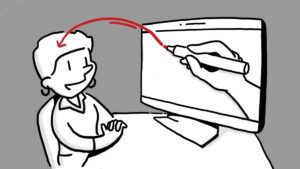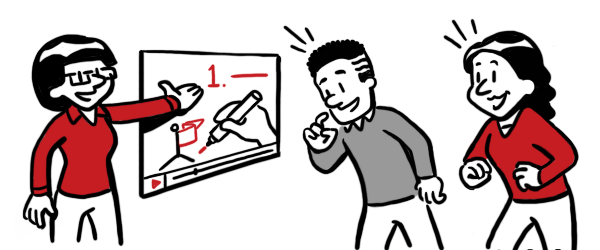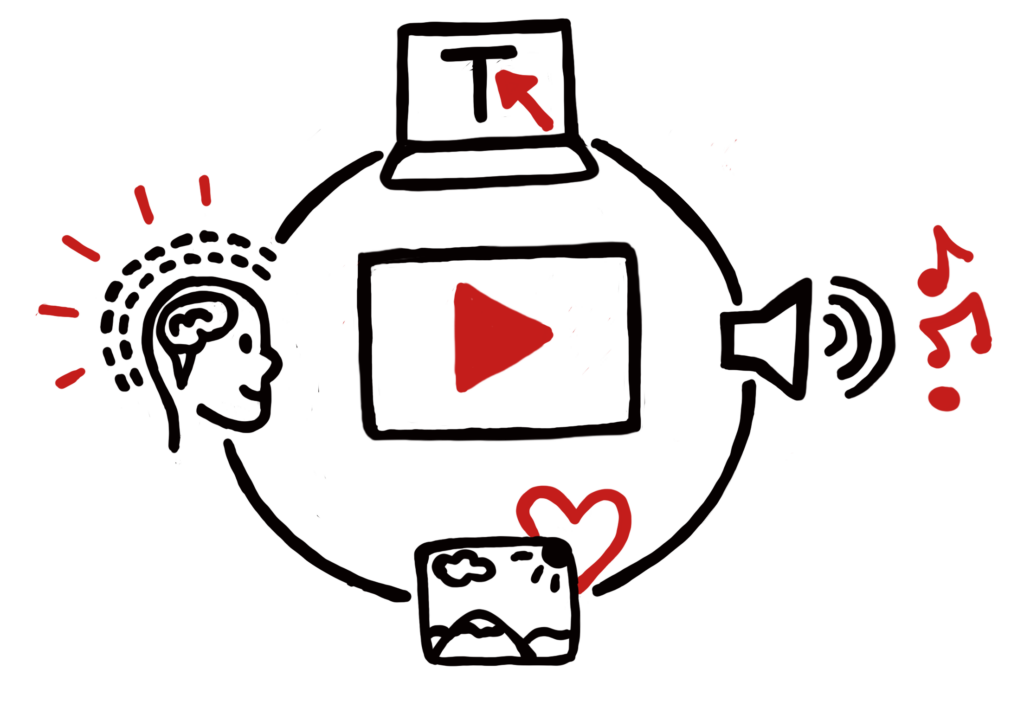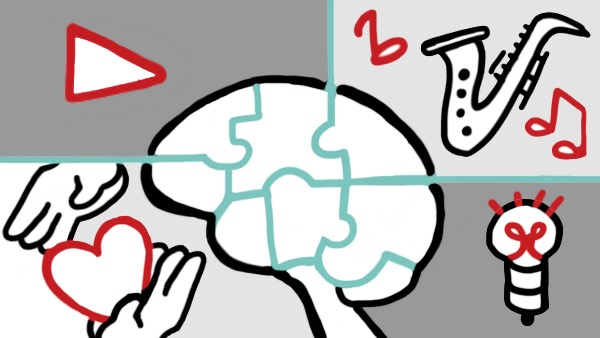HINT: Peripheral Vision, Dopamine, & constant motion!
Check out the 90 second video below. In the video and this post, we explore how hand drawn whiteboard messages along with a dash of brain science can boost message engagement and retention. Tap into the brain’s natural sensitivity to movement and addiction to surprise- Exploring the effectiveness of hand drawn whiteboard messages means you’re already on your way to more effective video communication!
What makes a video grab the viewer’s attention? What factors give hand-drawn whiteboard messages the distinct advantage of being remembered long after the viewer clicks away? The answer: Brain Science! We isolated the primary things that boost attention and retention in our whiteboard animation videos.
Informed by psychological and neuroscientific research, hand-drawn whiteboard messages have been proven to drive up engagement in, and retention of, a message. Why?
The Motion of Hand-drawn Whiteboard Messages
The principle of motion is tied to our primitive instincts and skills that pull the eyes toward motion, and can even turn the head to track movement. In hand-drawn whiteboard videos, the artist’s hand creates motion on the screen and the marker tip pulls the audience’s attention to the most important part of the frame, the hand drawn whiteboard messages. Once focused, the motion of the drawing attracts additional attention, which, in turn, is reinforced by the message the viewer hears from the narrator.
In “standard” animation, there’s no human hand to track. The images themselves move, which can create distraction and confusion without the hand and marker guiding the experience. With a plethora of images and animation occurring, the eye is pulled all over the frame. Without the focus and intentionality of motion, the viewer is no longer as attentive to the message.
Engaging Surprises of Hand-drawn Whiteboard Messages

Surprise causes the brain to release dopamine, which ranks as a pleasurable feeling, causing the brain to remain curious. In hand-drawn whiteboard videos, surprise happens often, keeping the audience interested in what will be drawn next. For example, when the voiceover mentions a word like “loyalty,” the viewer is curious as to how the artist’s hand will visually express this concept. They end up pleasantly surprised, whether they guessed correctly or not. That surprise carries them into the next image, and a cascade of engagement continues.
In “standard” animation, there’s less surprise, because there are fewer triggers. We simply see drawn characters moving in the frame. There is no time to become curious because there is no image evolution. Of course, there is still some surprise about what animation is next, it’s just not as frequent or meaningful.
Using A Eye Catching Color Scheme
Much like the moving hand, the accent color is used at the most relevant parts of the frame, creating a hard-to-miss visual distinction that clearly delineates which images are most important to the message.
In “standard” animation, accent colors are rare. In fact, the norm is to be as colorful as possible. This erases any effectiveness in directing the viewer’s eye , much less imparting significance to a highlight in the message. With the eye darting from image to image taking in the visual pleasure of the colors, the audio track is no longer in sync with the visuals. Message delivery suffers.
Hand-drawn Whiteboard Messages Create A Human Connection

Beyond being an element of motion, the artist’s hand becomes a relatable character, a personified creator that the brain naturally wants to follow. This advantage provides another focal tool. The human hand shows each image as it’s drawn, keeping it unique, grounded and real.
“Standard” animation has no human hand, so this principle is missing entirely. The images, while often beautiful and enjoyable, don’t feel authentic the way hand-drawn whiteboard video images do. There’s no question that the art in a whiteboard video was computer-generated, or pulled from a stock group of characters that the animator simply reuses.
Hands Down Different & Effective For Viewer Engagement

The principle of synchronization between audio and drawn elements is a core precept of whiteboard creation. The synchronization is key to maintaining engagement and improving retention.
There’s a different relationship in “standard” animation between the audio and visual elements, where it’s common to have moving imagery unrelated to the narration or message. Animation’s loose, haphazard relationship to the principle of synchronization can be entertaining. However, if you want to successfully transmit a retainable message, hand-drawn whiteboard should be your first choice.
Why use hand-drawn whiteboard messages in your video marketing?
Hand-drawn whiteboard employs multiple elements that keep viewers engaged and increase their retention of the message. There’s nothing wrong with “standard” animation, but when it comes to effectiveness and providing a powerful piece of carefully crafted communication, hand-drawn whiteboard is the way to go.
Want to learn more? CLICK HERE to read more about Scribology.

